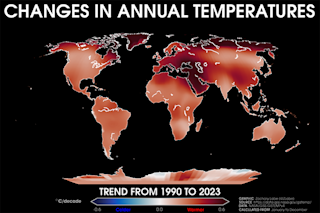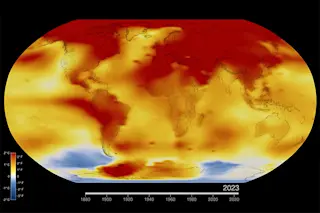An animation of infrared imagery acquired by the GOES-16 weather satellite shows a strong cyclone spinning over southeast Colorado on March 13, 2019. (Source: CIMSS Satellite Blog) As I'm writing this at 11:30 a.m. on March 13, 2019, winds are gusting above 45 miles per hour, snow is blowing horizontally outside my patio window, and the lights in my home are flickering. I hope that I manage to get this story posted before the electricity goes out... Winter Storm Ulmer is intensifying over the High Plains and going through a process known as "bombogenesis." You can see its evolution today in the animation above, consisting of infrared imagery from the GOES-16 weather satellite. The false color scheme is known as "Air Mass RGB." Meteorologists use it to identify temperature and moisture characteristics of an air mass surrounding and within large storms like this one. In the animation, reddish areas are ...
The High Plains bomb cyclone has exploded — a report from ground zero
Discover how the bombogenesis cyclone over the High Plains is affecting weather records and causing blizzard warnings.
More on Discover
Stay Curious
SubscribeTo The Magazine
Save up to 40% off the cover price when you subscribe to Discover magazine.
Subscribe













